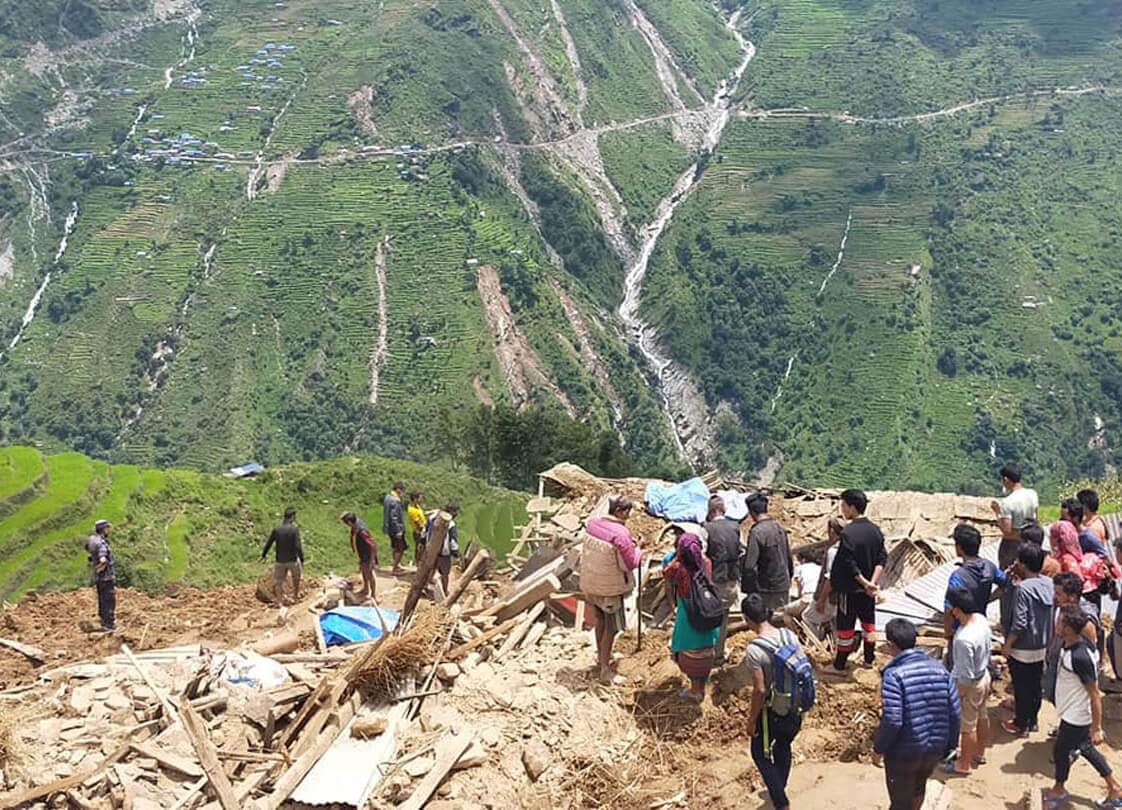Which loss and damage?

World leaders, including from Nepal, will gather again at Sharm El-Sheikh in Egypt this month to assess the climate emergency, and agree on urgent measures to avert irreversible damage to the ecosphere.
The Climate Summit is burdened with unnecessarily unwieldy nomenclature and acronyms which make its deliberations unnecessarily esoteric to politicians and ordinary people.
United Nations Framework Convention on Climate Change (UNFCCC) will be having its 27th session of the Conference of Parties (COP) to take stock of the latest report of the Intergovernmental Panel on Climate Change Working Group II Sixth Assessment Report (IPCC WG II AR 6).
We need to first to de-jargonise the above, and translate targets and commitments into everyday language so that people the world over understand the urgency of the emergency. Plain words would also expose the hypocrisy, grandstanding, victim-playing and victim-blaming that occurs every year at these summits.
This conference is called COP27. This means governments have met every year 27 times since 1994 to find ways to ‘stabilise greenhouse gas concentrations in the atmosphere to prevent dangerous interference from human activity on the climate system’. The atmosphere would be a lot warmer if nothing had been done, but it would have been a lot cooler if more had been done.
The summit in Egypt from 6-8 November 2022 takes place in a year during which the world suffered unprecedented back-to-back climate-induced disasters like record-breaking heat waves, forest fires, storms, glacial retreat and floods. Scientists say the intensity and frequency of these calamities are happening decades earlier than forecast.
If COP27 just meets earlier commitments from governments to pay $100 billion a year for mitigation and adaptation it will have served its purpose. But given the current global economic crisis due to the pandemic and the Ukraine conflict, that does not look likely.
Which is why climate justice demands by some countries, including Nepal, for ‘loss and damage’ is probably dead in the water. The argument is that the impact of the climate crisis is causing so much loss of life, livelihoods and property that just adapting to the change is no longer adequate.
Given the severity of the floods in Pakistan this year, the prolonged heat waves in India and China, landslides and floods in Nepal, it is clear that developing countries are unjustly and disproportionately paying for a crisis not of their making.
Even so, we in Nepal have to recognise that the climate crisis is just tip of the pyramid of problems that pre-date climate change. Structural factors like state neglect, governance failure, corruption and exclusion was already putting much of the population at risk.
Politicians in Kathmandu cannot blame the chronic food insecurity in western Nepal on climate change. They have done little in the past half-century to provide hill-irrigation to lessen farmers’ dependence on rain-fed subsistence agriculture.
They cannot blame the migration every year of 80,000 Nepalis for overseas employment on the climate crisis. For centuries, Nepalis have been migrating because of the lack of jobs, opportunities, poverty, indebtedness and discrimination.
A jumbo Nepali delegation is flying to Sharm El-Sheikh with a new Forest Minister who knows next to nothing about climate, is intent on logging 4,000 hectares of forest to build a new international airport, and allow cronies to build safari hotels inside national parks.
He will be demanding ‘loss and damage’ compensation for the Melamchi water project that suffered costly damage in last year’s flood. But the real loss in the Melamchi was caused by chronic corruption, mismanagement, political interference and incompetence spanning decades.
The destruction of farms and homes by landslides due to rampant, corruption-driven road building by rogue politicians is far more serious than the damage caused by global climate change.
No doubt, extreme weather events will be more frequent right across the Himalaya in coming years. There may be catastrophic co-seismic multiple glacial lake outburst floods. We have to prepare for those calamities by clever fund-raising, not go COP-hopping with a begging bowl.
At COP26 in Glasgow last year, Prime Minister Sher Bahadur Deuba pledged three things: increase forest cover to 45% by 2030, ensure climate resilience for all vulnerable Nepalis by 2030, and start reducing emissions to become carbon negative after 2045.
Nepal already has 44.74% forest cover, we just have to make sure we do not destroy what is left. The second commitment is so unmeasurable as to make it meaningless. And we do not see any new far-reaching tax incentives for battery vehicles or household electricity use to make use of surplus hydropower to reach net-zero in the next two decades.
Nepal’s ‘enhanced’ Nationally Determined Contribution presented to the UN aimed to hit net-zero by 2050. At the rate petroleum imports are rising, the country will be bankrupt by then. A dramatic switch to renewables for transport and household energy could allow Nepal to be carbon neutral even by 2030. But for that we need competence, commitment and political will.
Nepal has to reduce fossil fuel use not so much to save the planet, but to slash our petroleum import bill and improve urban air quality. Climate change gets a tangential mention in the manifestos of the major political parties preparing for this month’s polls. It does not even merit an empty election slogan.
Nepal has to stop playing victim all the time and invoke climate change for ‘loss and damage’ compensation. We should instead put our minds (and money) to implementing domestic low-carbon policies.
Read also: Climate change only one factor in Pakistan flood, Nepali Times




